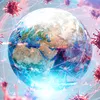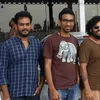VR, AR, programmable art - Pune Design Festival 2021 shows glimpses of the future
The Pune Design Festival showcased cutting-edge perspectives on envisioning and implementing digital media.
The annual Pune Design Festival, now in its 15th edition, featured a string of though-provoking sessions on digital impacts in business and education. Held online due to the coronavirus pandemic, the seven-day event featured 30 speakers and 10 workshops.
See earlier write-ups on the 2021 and 2019 edition here, and the DesignUp series of conferences and webinars (2017-2020). Our d.Zen (‘Design Zen’) section offers more resources on design.
See also my reviews of the related books Digital Open Innovation, Fusion Innovation, Reality Check, and Innovation Ultimatum. Check out our pick of Top Quotes of 2020 and 2019 on Design, and The ‘8 Is’ for Design Thinking.
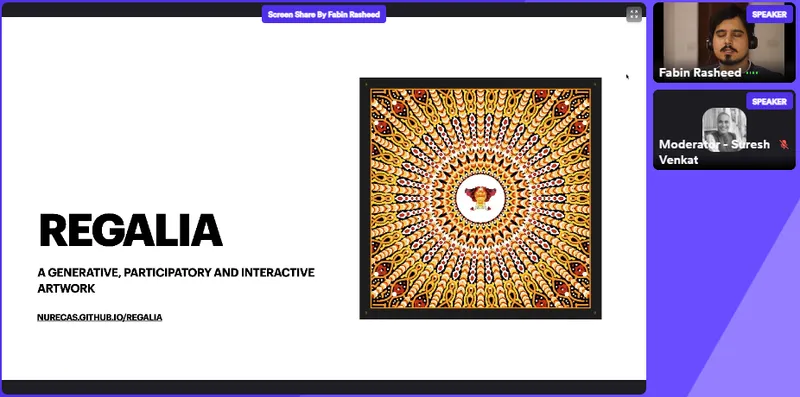
Fabin Rasheed at PDF (i)
Digital frontiers: art
Digital frontiers in creativity were showcased by Fabin Rasheed, an artist, designer and technologist. The IIT-Hyderabad graduate was earlier at Infosys, Xerox Research, and Adobe. His spectrum of works span AI, AR/VR, gestures, and blockchain.
He invited the audience to open these links on their laptop or phone, and just click and drag to see amazing artworks emerge: Regalia and Chromology.
Fabin shared his works displayed at the Florence Biennale, Ars Electronica Global Gallery, NeurIPS Creativity Gallery, Cobalt Gallery and Re.Work AI Summit. He also holds a number of patents in these emerging fields.
Fabin described a range of digitally-enabled art forms like generative visual art (from data or code), artsbots, generative poetry, and crypto-art. Blockchain-based art is based on non-fungible tokens (NFT), but there are concerns over high energy consumption involved.
Platforms showcasing emerging digital art in NFT space include Makersplace, KnownOrigin, NiftyGateway and SuperRare. Beyond this, Async.Art is another platform that enables buyers to purchase art in layers, or programmable art that can change based on whether it is being viewed at day or night, Fabin explained.
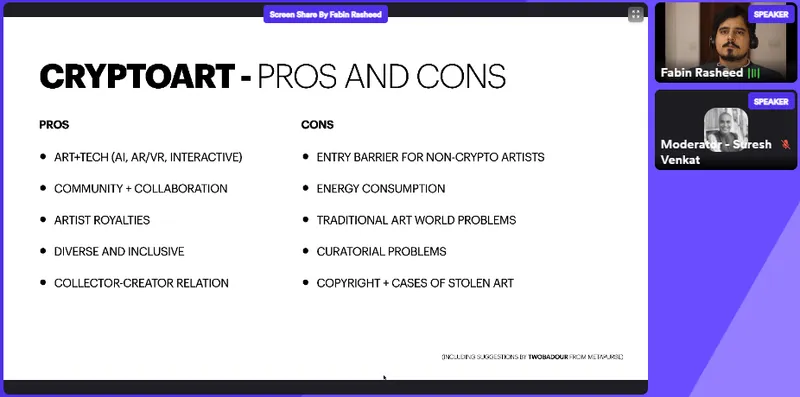
Fabin Rasheed at PDF (ii)
The Pilgrimage set consisted of nine artworks distributed across nine locations in countries including India, and could be unlocked only by actually visiting all those locations.
“Fun happens when play, collaboration and conversations come together,” Fabin explained. “Creativity is a constant, technology is a variable,” he evocatively summed up.
“Be experimental. Connect domains. Follow your heart. Be,” he advised digital creators.

Rahul Dutta at PDF (i)
Digital frontiers: VR and AR
Rahul Dutta, Co-founder of Delhi-based , shared insights from his two decades of work in areas like VR and AR. He is an avid creator in Second Life, where he has more friends than in social media, he joked.
His range of works include an Amul virtual parlour in Second Life, immersive videos for BBC on the Kumbh Mela and on farmers’ suicides, tank training AR videos for the army, VR-based training manuals for , a VR store, holographic medical imaging for AIIMS, VR simulations for rocket design at , and even artworks on robo-fish and space headsets.
Rahul has also launched Trikaan as a platform for retailers to engage with customers via AR and VR experiences. “Trikaan is one step better than dukaan,’ he joked.
AR and VR are game-changers in the training space, particularly for remote and hazardous locations, Rahul explained. See also my interview with Jeremy Dalton, author of Reality Check: How Immersive Technologies can Transform your Business.
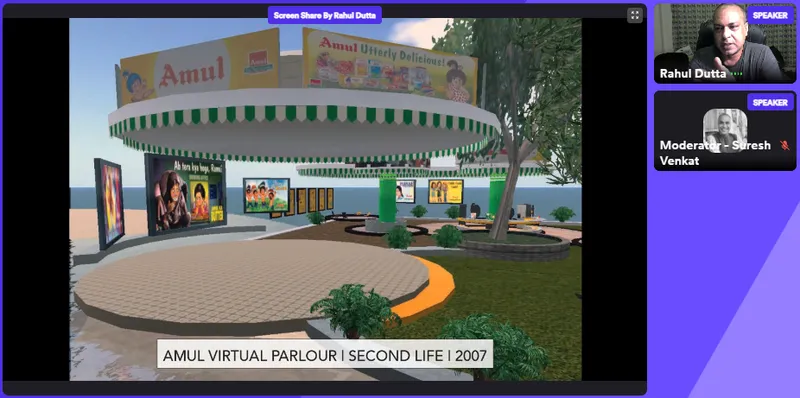
Rahul Dutta at PDF (ii)
AR and VR can help train uneducated and semi-skilled people by relying largely on video and voice and less on text, Rahul added. There is also potential in ‘enhanced reality’, or use of sensors and infra-red to heighten environmental sensing.
Some of these trends are already making their presence felt in the upcoming Microgravity Centre in Gurgaon for AR and VR gaming.
While some of the VR headsets are priced more at enterprise purchase levels, costs continue to drop, Rahul observed. Some have dropped in price from Rs 3.5 lakh to Rs 35,000 in just a few years.
Rahul also shared some of his personal creativity habits, such as regular practice and professional networking. “From April 1995 onwards, on every single Saturday night, I have created a work of art,” he proudly said.
He also helped curate the after-hours virtual party for the Pune Design Festival in Second Life. Some of his AR clients for consulting and development have also come from Second Life.
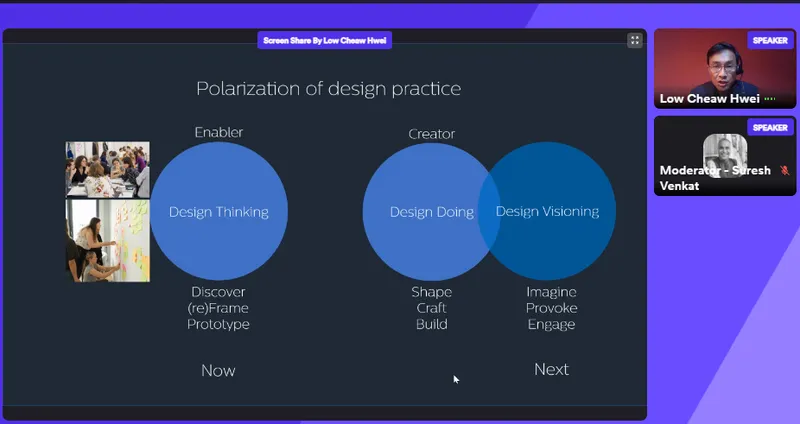
Low Cheaw Hwei at PDF (i)
Envisioning the future
In addition to design thinking and design doing, designers should be committed to design visioning, argued Low Cheaw Hwei, Head of Design for Philips in Asia and Head of Government and Public Affairs for Philips in Singapore.
The world seems currently overwhelmed with problems of a global scale in the pandemic era, and it is hard to keep up with the pace of change or articulate solutions to multi-faceted problems.
“Design’s role of provoking a view of the future is diminishing,” Low Cheaw cautioned. Agile design visioning is about how to imagine, provoke and engage with questions of the future.
Deep visioning goes beyond current trends, and involves narrative-driven exploration of storylines. The result is a “minimum viable provocation” as a bite-sized capsule.

Low Cheaw Hwei at PDF (ii)
Low Cheaw illustrated some of these principles with a future scenario of hospitals as a hub of mobile health-van networks. The smart vans can be driverless, and offer self-diagnostic tools.
“As today’s society moves fast, we need to imagine even faster,” he advised.
The last 40 years have witnessed a phenomenal acceleration of exponential technologies, as compared to evolution of the last 400 years. The pandemic has accelerated the pace of digital transformation even more, Low Cheaw summed up.
Edited by Teja Lele



